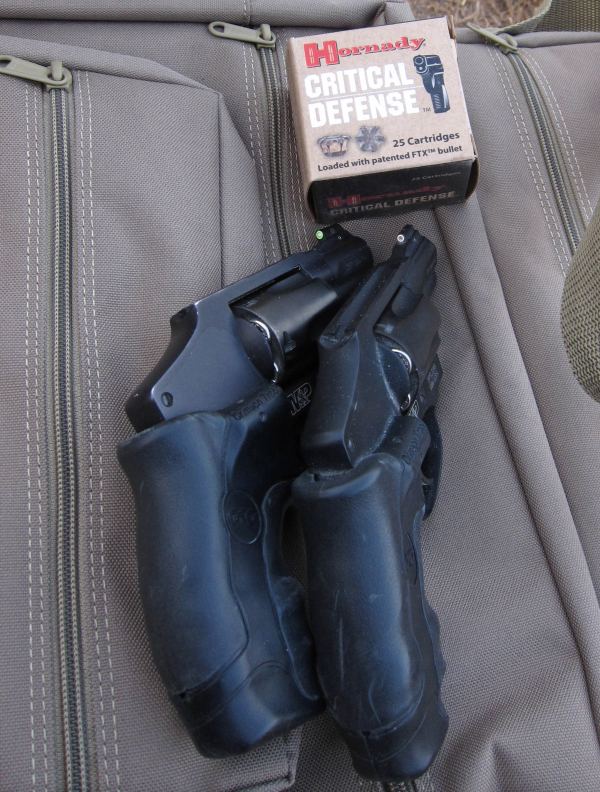
I was happy to see that pre-drilled front sights for S&W J-frame revolvers were being offered by XS Sights.
We got the Standard Dot for the S&W J-Frame to replace the dying front sight from my mid-2000s issue S&W M&P340. My sample is a work-worn 357 Magnum, received for T&E and retained as the more-or-less perpetual backup gun. It’s carried far more than any gun and has been for over a decade.
I’d been interested in replacing the front sight, but the previous XS replacement had to be drilled – 1/16th inch – and that takes some proper tools and a smart installer. I’d been in search of someone to handle the job when the release came out a few weeks ago about the pre-drilled sight. I quickly got one on order.
Like the previous “drill it yourself” sight, the new front sight is “dual-illuminated” – it has the tritium vial but it’s now surrounded by a proprietary photoluminescent ring, a “Glow Dot.” It absorbs ambient light to cause it to glow. It also provides contrast in good lighting conditions.
I prevailed upon Mike Rafferty to do the installation for me. He figured he could do it if “the hole in the ramp and the front sight were close.” It was another day before he contacted me, saying it took a “ … little file work to align the holes - but for mass produced products, gun and blade, (it was) damn close.” He also noted that he followed the factory instructions – XS does a great job of this both in written form and video – and he used “a lot” of thread locker.
I was anxious to see if the load that the gun had shot to point of aim before – the Hornady Critical Defense 110 FTX – still hit to zero.
Bad news.

The round hits tragically low. I was shooting from 10 yards on a B-8 and the rounds hit below the repair center. With the same maker’s +P load – going a bit faster, likely would hit even lower – I’d moved up to seven yards. I held the front sight up out of the notch with the front sight visually cutting the top of the “9” ring. I cut the “9” ring low on the bull. At ten yards with the sights held on the upper 10 ring, I hit a low 9, low 8 and a low 7. At fifteen yards, I held for the top of the 9 – and hit the high 7 ring.
Short variations in distance and how the sights are held move the strike a great deal.

Using a target repair center that’s a reproduction of the old Bakersfield PD target, I held the whole front sight over the notch. That let me stay on the repair center at 12 yards.
It’s clear there’s more work to be done, but this explains why I’m less concerned with what the projectile does on the FBI test and more concerned what I can get that hits to the sights.
I will start work with heavier, slower moving projectiles as they have more dwell time in the bore, meaning the gun will be higher in the recoil arc before the bullet leaves. That causes the heavier bullet to strike higher at these close distances – at least that’s the theory.
Investigation continues.
Meanwhile, I have a very visible front sight for the old gun. A newer gun rides in its place until I find the right ammo for this gun.
— Rich Grassi